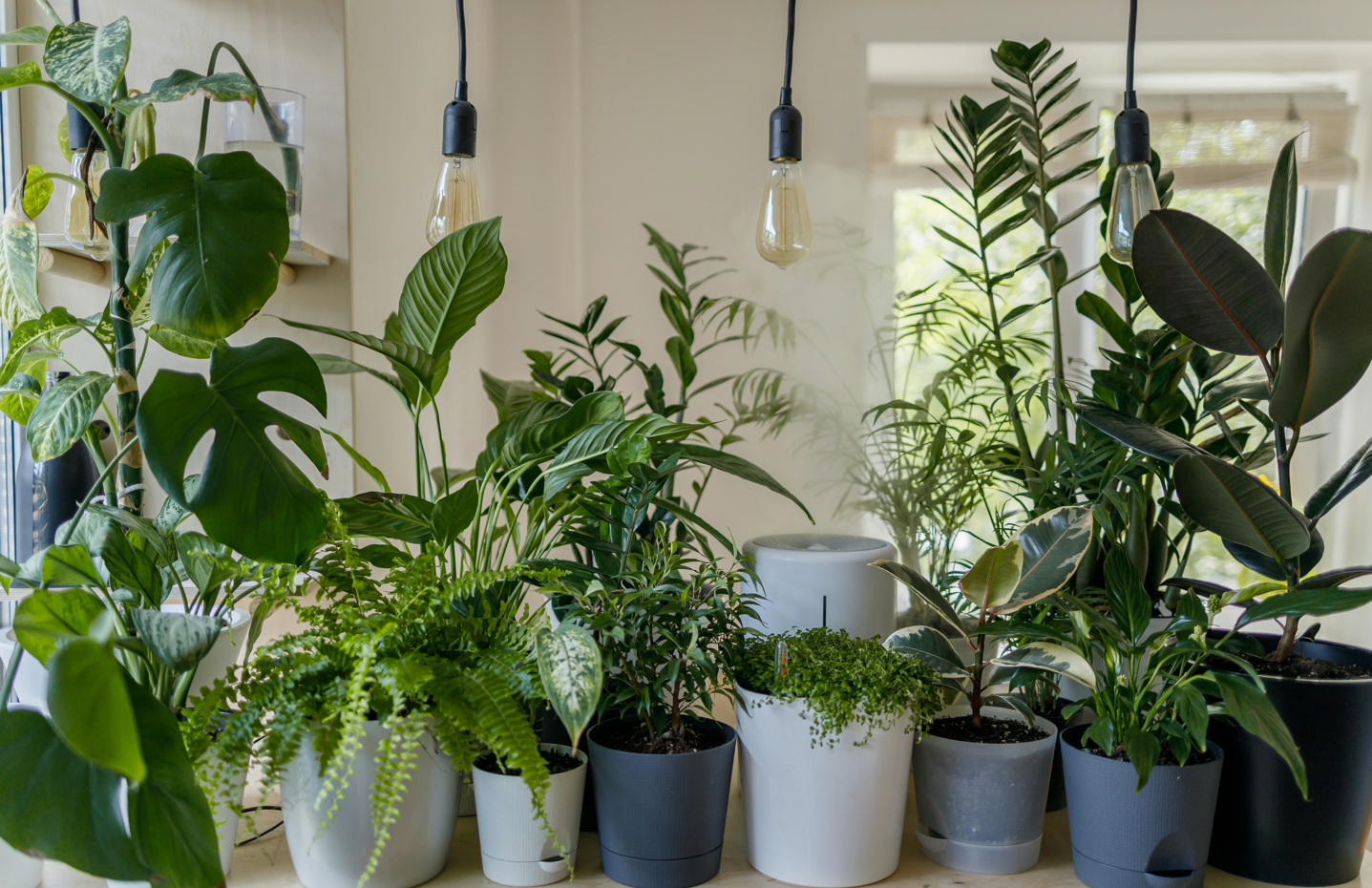Looking to get a houseplant for the first time? Or maybe you just keep killing the plants you already have! Here are a few of the basic needs of a houseplant and a few tips and tricks to help your plants thrive. If you’re questioning whether you should get a houseplant, consider some of their benefits. They’re scientifically proven to reduce stress levels. They also improve air quality. All in all, plants make great housemates!
Houseplants that are great for beginners:
- Snake plant (Sansevieria laurentii) – Tolerates the shade and can deal with dry conditions. Only need to water around once every two weeks. Also, it’s one of the best plants for air purifying.
- ZZ plant (Zamioculcas) – Can handle drought and a range of light conditions. Just water the soil when it’s nearly dry.
- Areca Palm (Dypsis lutescens) – Needs indirect sunlight and only needs to be watered around once every two weeks. Slow grower so no need to prune or repot for a while.
- Yucca – Enjoys dry soil so doesn’t need water often. Loves direct sunlight!
- Goldon Pothos/ Devils Ivy – Can handle low light conditions and is tolerant of most conditions. Very quick growing.
- Spider Plants (Chlorophytum comosum) – Not picky about conditions.
Basic tenants to keep a plant alive:
- Make sure there is a drainage system for water in your houseplants soil. This can be done by placing a layer of pebbles/broken pottery at the base of the plant pot. If you want to be fancy you can add perlite to your soil. If roots sit in water for too long, they will gradually rot, making it harder for the plant to absorb moisture.
- Water your plants when needed. For most plants, knowing when to water is easy. Stick your finger in the soil until it reaches your first knuckle. If the soil is dry, water it. If it still feels slightly damp wait a day or two to water.
- Repot houseplants when they have grown too big for the pot. This allows them to grow and become bigger. Plants can become pot bound if they’re in too small of a pot. This will decrease the health of your plant. The most obvious sign of being too small of a pot is visible roots. These often peak out at the top layer of a plant or through drainage holes.
- Feed your plants. Plant feed can be found in most garden centers and online. For a general rule of thumb, feed your plants every two weeks in summer. For winter feeding is usually around once a month.
- Dust your houseplants leaves regularly. Dust blocks sunlight, reducing the plants’ ability to photosynthesize. Dusting is easy! Take some wet kitchen roll and gently rub across the leaves until the layer of dust is gone.
- Don’t water your plants with cold water. Room temperature water is much preferred. Cold water can shock the plants root system which can cause root rot and other issues.
- Remove dying leaves to encourage new growth. Just snip the whole leaf stem from the base.
Tips:
- Not enough light for a plant? Get a grow light! Many online stores sell them and even some garden centers. You can get portable ones which are easy to move around and don’t take up a lot of space. They even add a bit of mood lighting to a room!
- If you forget to water your plants, consider a self-watering pot. Although they cost more than the average pot, they make keeping a plant alive easy! My personal favorites are the pots from Lechuza. They can be found here.
- Following on from the previous point, get a self-watering stake. They’re cheaper than a self-watering pot but still follow the same premise. They can be found in most garden centers and often come in packs.
- Create a watering diary so you know what plants are due a water and when. This helps remind you to water your plants and keep track of what you have done to them.
By Jenny Hall, SGO Project Officer
 Sustainability
Sustainability Bethany Climpson
Bethany Climpson 736
736


